It’s finally here, my friends — Xfer Serum 2 has finally dropped!
If you’re a producer or sound designer, this is one of the biggest updates we’ve seen in a long time (11 years to be exact).
And the best part? It’s a free upgrade, which means if you already own Serum, you don’t have to pay a cent.
That’s right, this means lifetime free updates are still going strong.
Xfer Serum 2 brings new oscillator types, better sample oscillator control, powerful granular oscillator tools, and some really next-level stuff like real-time sample slicing, upgraded filters, and full-on sequencing.
Plus, you’re getting a brand new mixer module, a smoother preset browser, deep modulation updates, and some wild routing arpeggiator and clip tools.
It really feels like a full sound design workstation, and of course, I’ll get into every single one of them in detail.
Here’s a quick look at some of what I’m about to break down:
- Multiple oscillator types ✓
- Brand new wavetable oscillator warps and features ✓
- Full sample oscillator packs and looping upgrades ✓
- Built-in multisample oscillator with real instruments recorded ✓
- Powerful spectral oscillator options and harmonic level editing ✓
- Real-time sample slicing and playback tools ✓
- Upgraded clip sequencer the goal with advanced arpeggiation ✓
- Ridiculous power control and expression tools/routing ✓
- New creative workflow oriented interface elements ✓
- Everything you need to know for epic sound and music ideas ✓
- Lifetime free updates ✓
- Much more about Xfer Serum 2 ✓
By the end of this post, you’ll know exactly how to use all the new features, functions, and upgraders that Xfer Serum 2 has to offer.
You’ll also discover where everything lives, what each section does, and how to actually use it to turn your sound and music ideas into finished tracks.
It’ll make a huge difference in how fast you can work, how clean your sessions sound, and how creative you can get when laying down something unique.
I don’t know about you, but I’m super excited about this, and it’s about damn time.
Table of Contents
- Breaking Down Xfer Serum: The OG
- Xfer Serum 2: New Updates, Features & Functions
- Expanded Oscillator Capabilities & Synthesis Types
- Advanced Filter Types & Section
- Sample Slice Mode + Real-Time Score Playback
- Redesigned Effects Section and Routing
- Pro Tip: Convolution Reverb vs. Algorithmic Reverb
- Improved Modulation System
- New ARP & Sequencing Tools
- User Interface Enhancements
- New Preset Browser with Audio Preview
- New Mixer Module for Source & FX Routing
- Additional Features and Improvements
- Final Thoughts
Breaking Down Xfer Serum: The OG
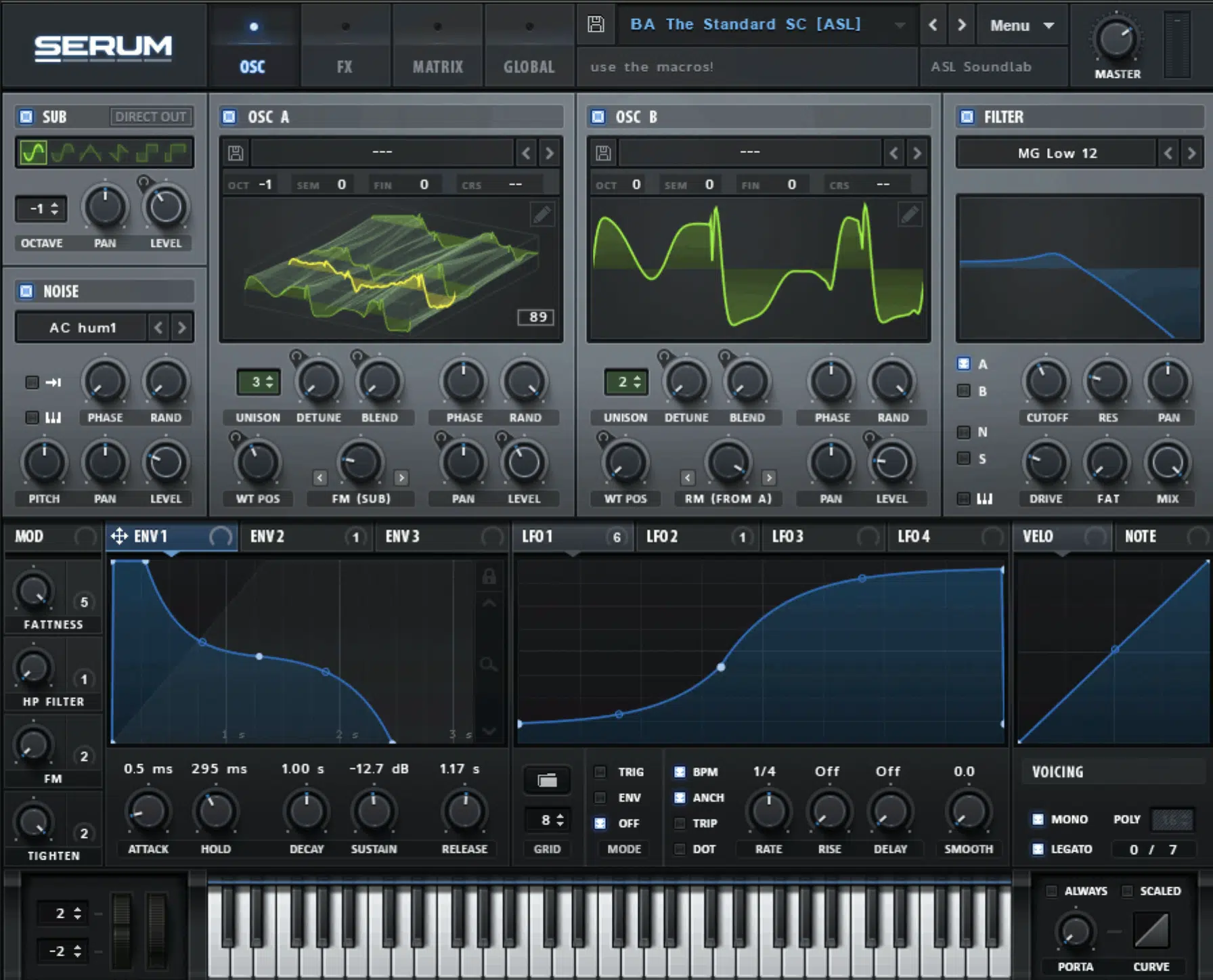
Before jumping into everything that’s new with Xfer Serum 2, let’s talk about what made the original Serum such a game-changer.
If you’re newer to the scene or just never got deep into it, Serum became the go-to wavetable synthesizer for producers and sound designers everywhere.
It gives you an insane mix of control, power, and ease of use all in one epic plugin.
You have a clean layout with a fully visual and creative workflow that makes it easy to see and hear every little tweak in real time, whether you were messing with:
- LFOs
- Envelopes
- Filters
- The MOD matrix
The core of Serum has always been this legendary wavetable oscillator, which lets you shape sounds using custom waveforms and drag-and-drop modulation.
So, when it comes to flexibility and turning simple ideas into wild, layered sounds fast, it just can’t be beat 一 hands down.
It also has an impressive FX rack, so you could apply distortion, chorus, reverb, delay, etc. without ever needing to leave the synth itself.
You could drop in your own wavetables, edit them on the fly, and create truly high-quality sound right inside the synth.
Add in the versatility of oscillator types, smart routing, and a layout that’s fast to learn but deep enough for anything, and you can see why Serum users never complain.
It’s been used across everything from EDM to hip-hop, pop, and film scoring — and with Xfer Serum 2, everything that made it great has just been pushed way further.
Xfer Serum 2: New Updates, Features & Functions
Now that we know where Serum started and what makes it the ultimate wavetable synthesizer for producers and sound designers, let’s get to the fun stuff: all the new updates Xfer Serum 2 has to offer. Crowned the king of hybrid synthesizers, these upgrades are going to seriously blow your socks off. Make sure to get Xfer Serum 2 before June 1st for the discount ($189). After that, it will be $249.
Expanded Oscillator Capabilities & Synthesis Types
One of the biggest upgrades in Xfer Serum 2 is how much deeper it goes with synthesis by expanding to multiple oscillator types.
All while still keeping that same creative workflow-oriented interface we know and love.
Right off the bat, the upgraded wavetable oscillator now includes a smooth interpolation mode that makes frame scanning super smooth.
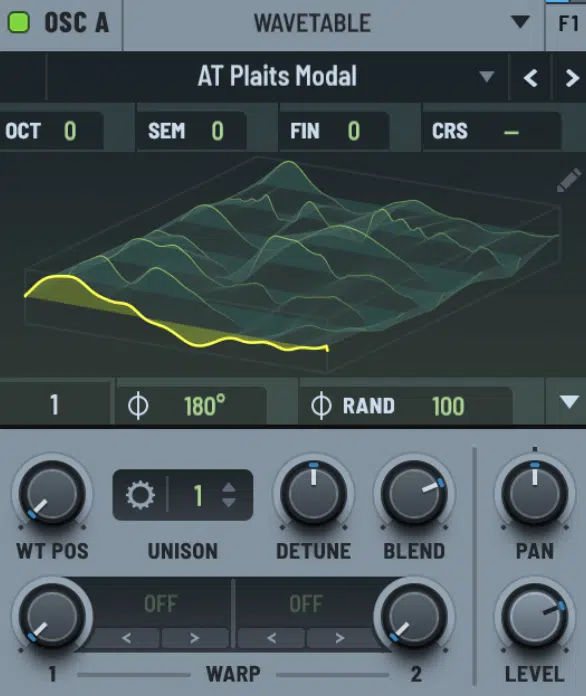
Yes, even if you’re using complex modulation shapes across near infinite frame positions (which honestly helps you nail tones with more movement and clarity).
The new multisample oscillator gives you the ability to load layered patches using the SFZ file format.
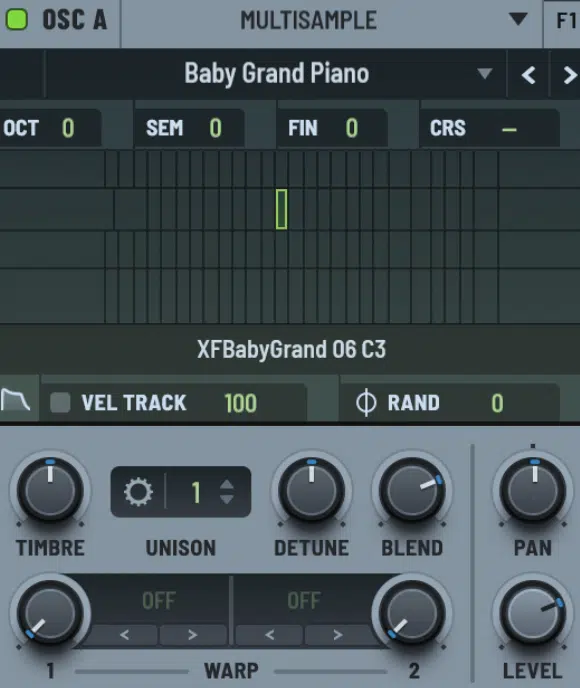
This means you can now use real instruments recorded across velocity layers and sample zones, adding real-world realism to any digital sound.
Even better, the multisample oscillator lets you replicate pianos, strings, choirs, and other real instruments directly inside the synth.
And it’s all laid out across the keys with super clean pitch tracking.
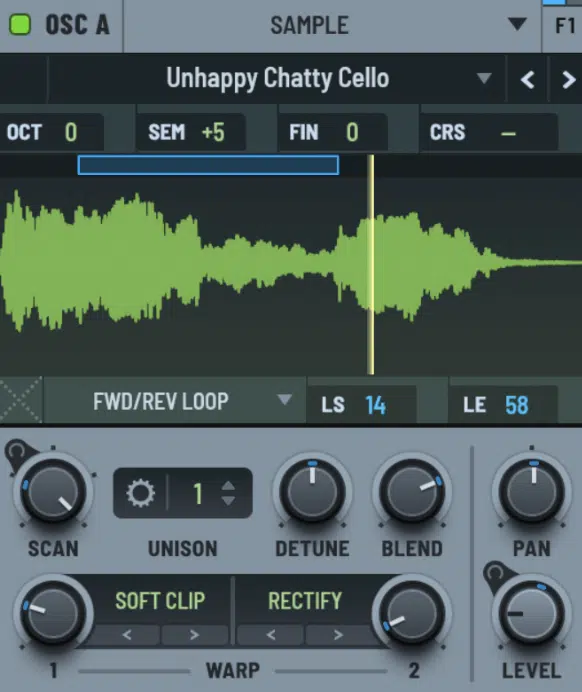
The sample oscillator also got a major overhaul with:
- Tighter snap loop detection
- Full pitch control
- Looping options
- Even flexible loop modulation
This lets you shift loop points dynamically while a sound is playing to get smooth, evolving textures or rhythmic resampling tricks.
Side note, there are now sample oscillator packs included with Xfer Serum 2, so you’ll have tons of high-quality audio content to work with immediately.
From drums to atmospheres to tuned one-shots that sound amazing when pitched across the keyboard, it’s all right here.
Then you’ve got the new granular oscillator, which is insanely dope when it comes to texture-based sounds or turning one short hit into something way bigger.
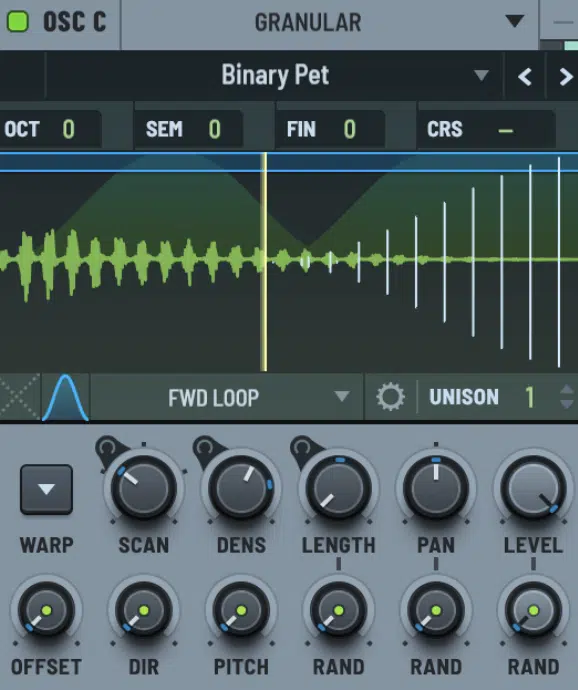
Plus it includes full control over grain size, density, and scan rate 一 making it one of the most powerful granular oscillator setups in any soft synth right now.
Finally, there’s the new spectral oscillator, which gives you harmonic-level control with transient detection processing similar to spectral/realtime resynthesis tools.

This means you can manipulate the shape and energy of a sound in the frequency domain while still maintaining pitch and timing for seriously advanced sound shaping.
Bottom line, when it comes to oscillator capabilities and synthesis types, if you thought it was sick before, you’re going to absolutely lose your mind now.
Advanced Filter Types & Section
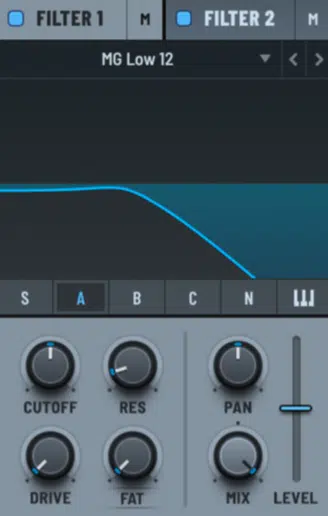
The new filter section in Xfer Serum 2 is way more advanced but it still feels familiar when you open it up, so don’t worry.
It has two completely independent filters (dual filters) that can be routed in series or parallel depending on how deep you want to get.
If you’re unsure, ‘in series’ means one right after the other, and ‘in parallel’ simply means each has its own output.
Each filter supports all the classic types like low-pass, high-pass, band-pass, and notch.
But now, you’re also getting brand new virtual analog filter models that were rebuilt from the ground up to deliver smoother sweeps, richer harmonics.
And more authentic analog-style saturation; they really shine when pushed with high drive settings or modulated with custom LFOs.
One of the biggest upgrades here is the direct control system that lets you grab filter points visually with your mouse and drag them around for real-time feedback.
This alone makes it easy to dial in specific tone shaping without guessing or overcomplicating things.
Whether you’re using filter one on your main wavetable oscillator and routing filter two to the sample oscillator or stacking both for more layered movement, the new system gives you full user (ridiculous) power/control over how your filters interact.
You can use key tracking to create filter responses that shift naturally as you play up and down the keyboard or route mod sources to:
- Cutoff
- Drive
- Resonance
- Morph
This is super easy with the new drag-and-drop-style grid.
Don’t worry, this hybrid layout still feels like Serum, but everything has been upgraded visually and sonically, so it’s great.
Plus, you’ll notice that the filters respond faster and with better resolution, which gives you a truly high-quality sound/visual power and more precise mixing inside the patch.
Side note: The new “PZSVF” mode lets you draw your own custom filter shapes for yet another layer of sonic creativity!
Sample Slice Mode + Real-Time Score Playback
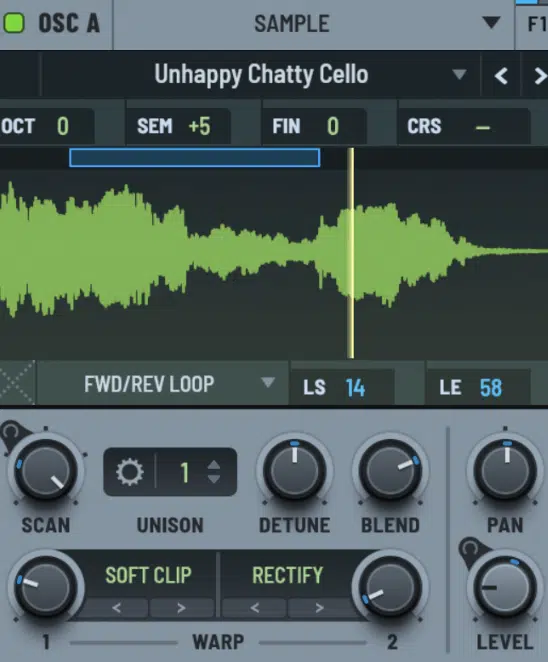
The new sample slice mode inside Xfer Serum 2 is an absolute game-changer for anyone working with the sample oscillator.
It gives you precise control over slicing audio and playing it back rhythmically with zero effort or issues.
You can now enable automatic slice detection, where the engine creates slice points based on transients, or manually adjust them using the waveform view.
With up to 64 slice points per sample, actually.
Once your slices are locked in, you can trigger them chromatically across the keyboard, or sequence them using the clip sequencer.
This reads real-time pitch and rhythm from the slice grid 一 letting you program drum breaks or vocal chops directly inside the synth.
This new feature isn’t just about editing audio either.
It adds true user ridiculous power control to the sample oscillator workflow, helping you loop individual slices, reverse them and adjust sample playback speed.
Plus, stretch them using advanced timestretching algorithms enables you to keep things in tempo without warping the pitch.
Redesigned Effects Section and Routing

The effects section in Xfer Serum 2 is another sick upgrade that gives you way more freedom and flexibility with how you shape your sonic output after the sound leaves the oscillators.
You can now add multiple instances of effects like distortion, reverb, delay, and EQ.
For example, stacking two separate distortions followed by a filter and chorus, all in the order you want, which makes sound design way more fluid/layered.
There are also brand-new effects included, like the:
- Bode frequency shifter
- Overdrive
- Algorithmic reverb
- Even a convolution reverb
All of which add new texture and space to patches, by the way.
Plus the inclusion of a signal splitter module means you can now do mid/side or band-based processing within the FX rack itself.
For example, you can isolate only the high mids of a lead and run them through delay, while leaving the low mids untouched for a clean bottom end.
Effects routing is now done visually in a drag-and-drop grid, and you can instantly toggle parallel or serial paths using a simple toggle that sits next to each effect slot.
This whole section feels like a modular FX board built straight into the synth and it ties perfectly into the types flexible effect routing system that makes Xfer Serum 2 feel like more than just a synth (which is why they now call it a hybrid synthesizer).
-
Pro Tip: Convolution Reverb vs. Algorithmic Reverb

In Xfer Serum 2, you get both a convolution reverb and an algorithmic reverb, and knowing when to use each one will seriously level up your mix.
The convolution reverb uses real impulse responses, meaning you can drop in the character of actual rooms, halls, or even physical spaces like a stairwell or church.
This is perfect when you’re after realism or want to match your synth to live elements.
The algorithmic reverb, on the other hand, is more flexible and synthetic.
It’s great for designing longer tails, huge pads, or wide stereo effects when you want something lush and modulated that doesn’t need to mimic reality.
Improved Modulation System
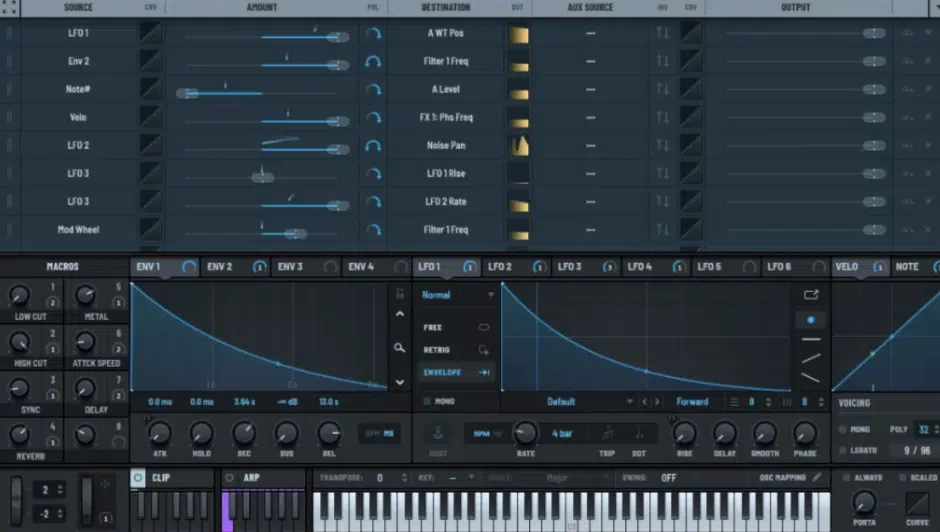
Next up we have the modulation system in Xfer Serum 2, which has been completely re-engineered to give you even more ridiculous power control.
All while keeping the whole layout clean and usable.
You now get up to 10 LFOs and 4 envelopes, and each one can be freely assigned to any parameter using the drag-and-drop workflow we all rely on.
The new Chaos LFO modesinclude Lorenz and Rossler options, which introduce complex, semi-random shapes that still feel musical.
These are perfect for evolving pads, broken textures, or adding motion to filters and oscillator types.
Each LFO supports full grid resolution (adjustable from 1 step up to 64) with curve snapping, smoothing, and phase start position controls for surgical automation.
The modulation matrix has been overhauled as well for dynamic reordering of:
- Routings
- Real-time graph previews
- Auxiliary shaping curves
This way, you can morph mod amounts in response to other mod sources.
So, for example, you could have an envelope control the depth of an LFO that’s hitting your wavetable oscillator, then scale that based on note velocity.
Combined with the new modulation visualizer (which shows live movement across all targets), the system is now one of the most visual and creative workflow setups for modulation you’ll find in any wavetable synthesizer ever.
New ARP & Sequencing Tools

Xfer Serum 2 now comes with a built-in arpeggiator and clip sequencer, and both go way beyond what you’d expect from a synth plugin.
The clip sequencer gives you up to 16 lanes of automation across pitch, gate, velocity, mod amount, and custom parameters.
This means you can literally program full melodic phrases, rhythmic modulations, or evolving automation right inside the synth itself (sick, right?).
You can also draw in automation per step, lock it to different grid resolutions from 1/16 to 1/64, and even randomize entire lanes with the click of a button.
This makes the clip sequencer the goal for sketching out wild movement.
The arpeggiator lets you stack up to 8 notes per step, and includes direction modes like up, down, random, and custom.
And, gives you swing and gate controls so you can dial in grooves that hit just right.
Both tools can output MIDI data to your DAW, which is super helpful for turning quick ideas into full parts and tracking them out for arrangement.
And because these sequencing tools are tightly linked to modulation sources, you can route a single clip to multiple targets (like filter cutoff, noise level, or pan position) and turn one sequence into a multi-layered movement.
For anyone who’s ever wanted a deeper routing arpeggiator and clip system or something that functions like a built-in hybrid synthesizer, you’ll absolutely love it.
I’ve got to say, the built-in arpeggiator and clip sequencer is one of the most mind-blowing new additions to Xfer Serum 2 in my opinion.
Side note, if you want to learn all about arpeggiators or sequencers, I got you.
User Interface Enhancements
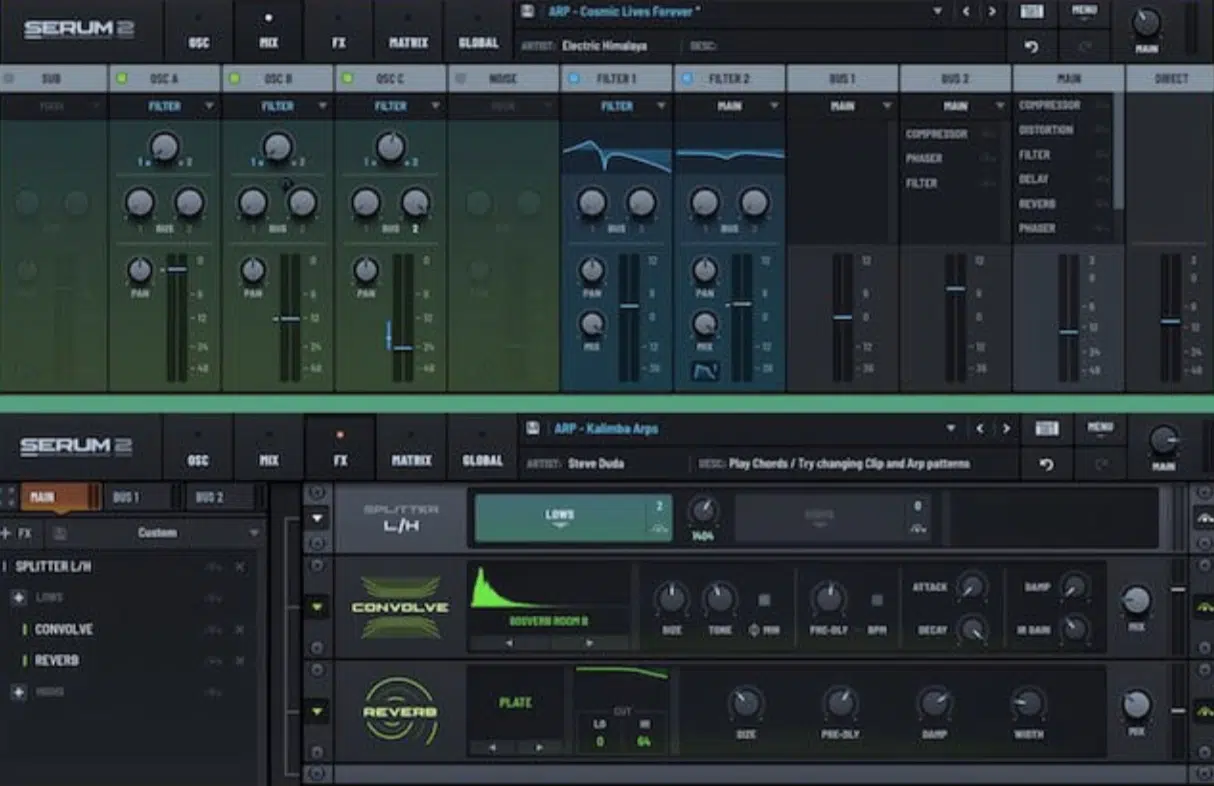
The UI in Xfer Serum 2 has been modernized with cleaner typography, smoother animations, and updated color modes.
It’s great for a whole bunch of reasons, like making longer sessions easier on the eyes without changing how anything works.
You can now resize the interface freely up to 200%, and the new tab system lets you jump between pages like: modulation, effects, matrix, and browser without cluttering your screen.
Overall, the interface still feels like the OG Serum, but every change makes it faster, more responsive, and more fun to use.
This is especially true when locked in on a late-night sound design session.
New Preset Browser with Audio Preview

The new preset browser in Xfer Serum 2 is completely reworked, and it finally adds instant audio previewing when scrolling through patches, which I’ve been waiting for.
You can fly through sound categories without needing to load each one.
Also, you can filter by tag, type, oscillator mode, author, or even modulation type, and you’re now able to create folders and custom labels to organize your library your way.
There’s a dedicated search bar that updates results in real time, and the preview system plays back the preset with a built-in root note, default envelope, and held velocity for consistency.
I feel like this is super helpful when sorting through sample oscillator packs or imported sounds (really everything feels more streamlined, actually).
It also displays macro assignments and key routing indicators upfront, which means you’ll know immediately if something’s mapped to cutoff, FX, or movement.
All before you even load it, which is great.
Whether you’re flipping through real instruments recorded, aggressive leads, or evolving atmospheres, the new browser just makes it faster to lock in what you’re after and get back to laying down music that fits your unique style.
New Mixer Module for Source & FX Routing
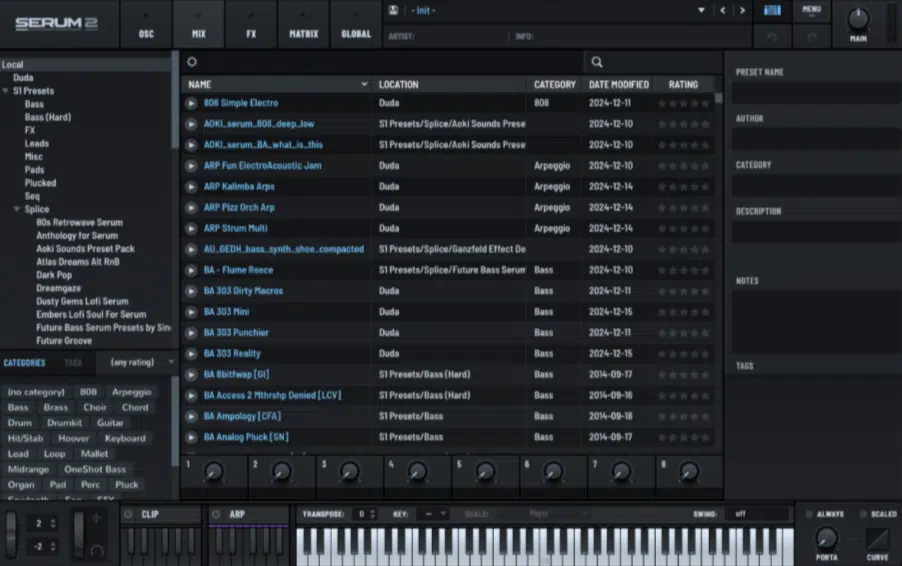
Xfer Serum 2 also introduces a new dedicated mixer module that gives you full control over balancing and routing each sound source before and after effects.
It can help you take layering and dynamics to a whole new level, for real.
Inside the mixer, you can adjust the volume, pan, mute, solo, and phase for each generator, including:
- Oscillator A
- Oscillator B
- Sub
- Noise
- Sample oscillator
- Multisample oscillator
- Any other active sources
There’s a central fader-style view with meters for each channel, and each track can be routed to either Filter 1, Filter 2, or directly into the FX rack.
You also get a separate sonic output control for FX Return…
This means you can run parallel wet/dry chains with no external devices, and then send the output into a limiter or utility block if needed.
If you’re using the granular oscillator or the spectral oscillator, you can send those sources through unique FX paths while keeping your wavetable oscillator untouched (perfect for multi-timbre sound design).
Another standout feature is the post-mix modulation assignment, where you can link a macro or LFO to the level of a mixer channel.
So, if you want your sample oscillator to fade in after 2 bars using LFO 4 with a curve shape set to sine over 8 beats, that’s now possible with one connection.
This mixer makes Xfer Serum 2 feel less like a synth and more like a modular hybrid synthesizer workstation (big win if you ask me).
It gives you complete power control and expression over your various sound layers.
Additional Features and Improvements
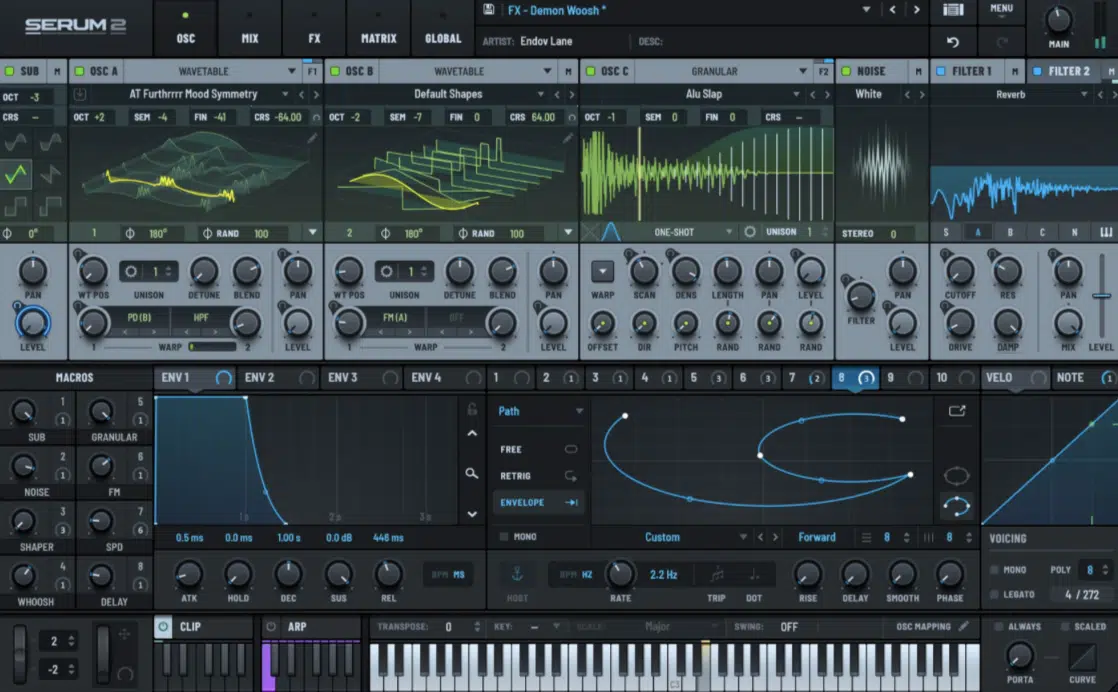
Now, if all of those epic new features/functions weren’t enough, Xfer Serum 2 also comes loaded with a bunch of new tools and workflow boosts.
So, let’s get into it because they really tie everything together and push the entire experience even further, believe it or not.
#1. One of the first things you’ll notice is the updated undo and redo system.
This now tracks every movement you make across modulation, oscillator edits, envelope tweaks, and types, flexible effect routing arpeggiator, etc.
This makes it easy to backtrack without losing ideas or inspiration.
#2. The brand new audio to wavetable algorithm is cleaner and way more detailed.
This lets you drag in raw audio and generate complex wavetables with smoother transitions and new wavetable warps.
It’s perfect for turning weird textures or vocal hits into usable synth layers with real-time synthesis, so definitely play around with that.
#3. You’ve also got keyboard improvements with Xfer Serum 2 like note range locking, scale and key highlighting, and tempo-synced swing control.
It really helps keep things musical when programming in your clip sequencer or testing out ideas using AAX compatible host software or audio unit setups.
#4. The rebuilt wavetable editor is sharper too, giving you curve snap points, near infinite frame positions, and real-time preview of changes.
So, when it comes to staying creative and fast when creating Serum patches or working with sample material that needs detailed tweaking, it’s much easier.
#5. One of the slickest workflow tricks is the ability to now save and load FX presets, which includes effect chains, parameter settings, and macro assignments.
There’s also a new hybridize presets function in the browser that lets you mash up two sounds to instantly spark new music ideas into form.
#6. Overall performance of Xfer Serum 2 got a serious lift.
Engine optimizations & performance boosts make everything feel snappier, and Apple Silicon support ensures compatibility is tight for modern machines.
Yes, while keeping the promise of lifetime free updates actually going strong.
Bottom line, all of these additions are 1000% invaluable.
From advanced timestretching algorithms, snap loop detection, and flexible loop modulation, to tools like the hybrid synthesizer vibe that ties modulation and sequencing together, it’s all here.
It can blast the sonic palette wide open and give you way more freedom to create with ridiculous power, real control, and truly high-quality sound every single step of the way.
Final Thoughts
And there you go: everything you need to know about the new features, functions, and offerings that Xfer Serum 2 has to offer.
From the expanded oscillator types and insane sample slicing tools, to the new mixer module, upgraded FX section, and full-blown hybrid sequencer workflow, it’s epic.
And now, with this new information, you’ll be able to seriously speed up your sound design sessions, unlock new levels of creativity, and make every synth layer hit harder.
Plus, with everything from granular oscillator tools to clip sequencer upgrades, you’ll be able to shape sounds like an absolutely professional.
Seeing all of these new updates, it’s clear that Xfer Serum 2 isn’t just a synth upgrade 一 it’s a complete redesign of what’s possible inside a virtual instrument.
And since you now know about all of these awesome changes, you’ve got to check out these legendary (free) Serum Essentials.
It includes the most clean, polished, and professional Serum presets for each genre that will honestly blow your mind.
No need to reinvent the wheel, because the right sounds for your unique style or genre are all right here; they’re key to having your beats sound professional.
And you’ll definitely get more plays and attention, for sure.
And bonus, every preset inside is fully loaded with macros and flexible parameters, enabling you to tweak, customize, and truly make each sound your own.
Bottom line, the new upgrades to Xfer Serum 2 are absolutely next level.
And now that you know all of them, it’s time to go flip some presets, experiment with new mod setups, and push your sessions further than you ever imagined.
Just remember to always play around and try new combinations — because otherwise, you’re leaving the full power of this dream synthesizer on the table.
Until next time…







Leave a Reply
You must belogged in to post a comment.